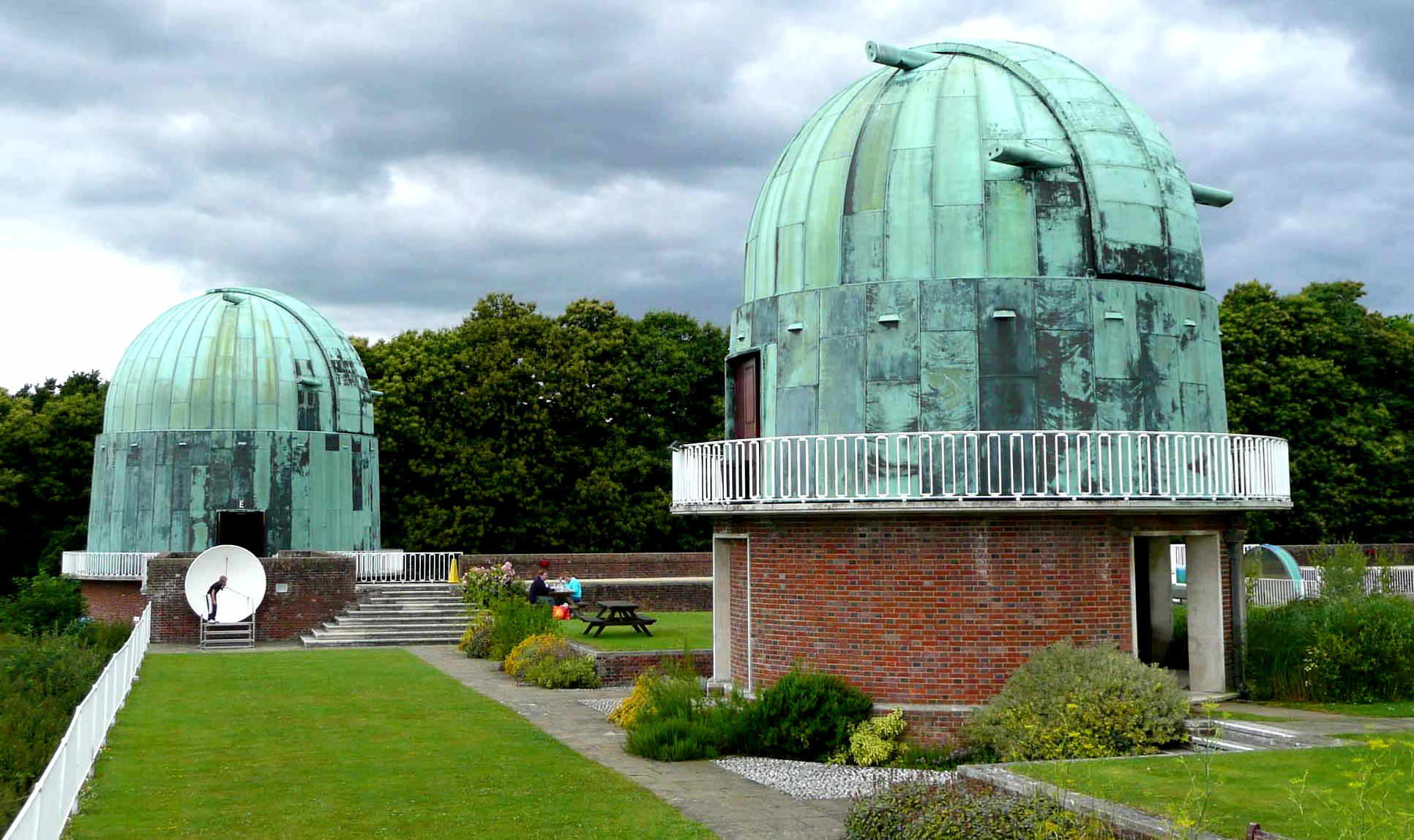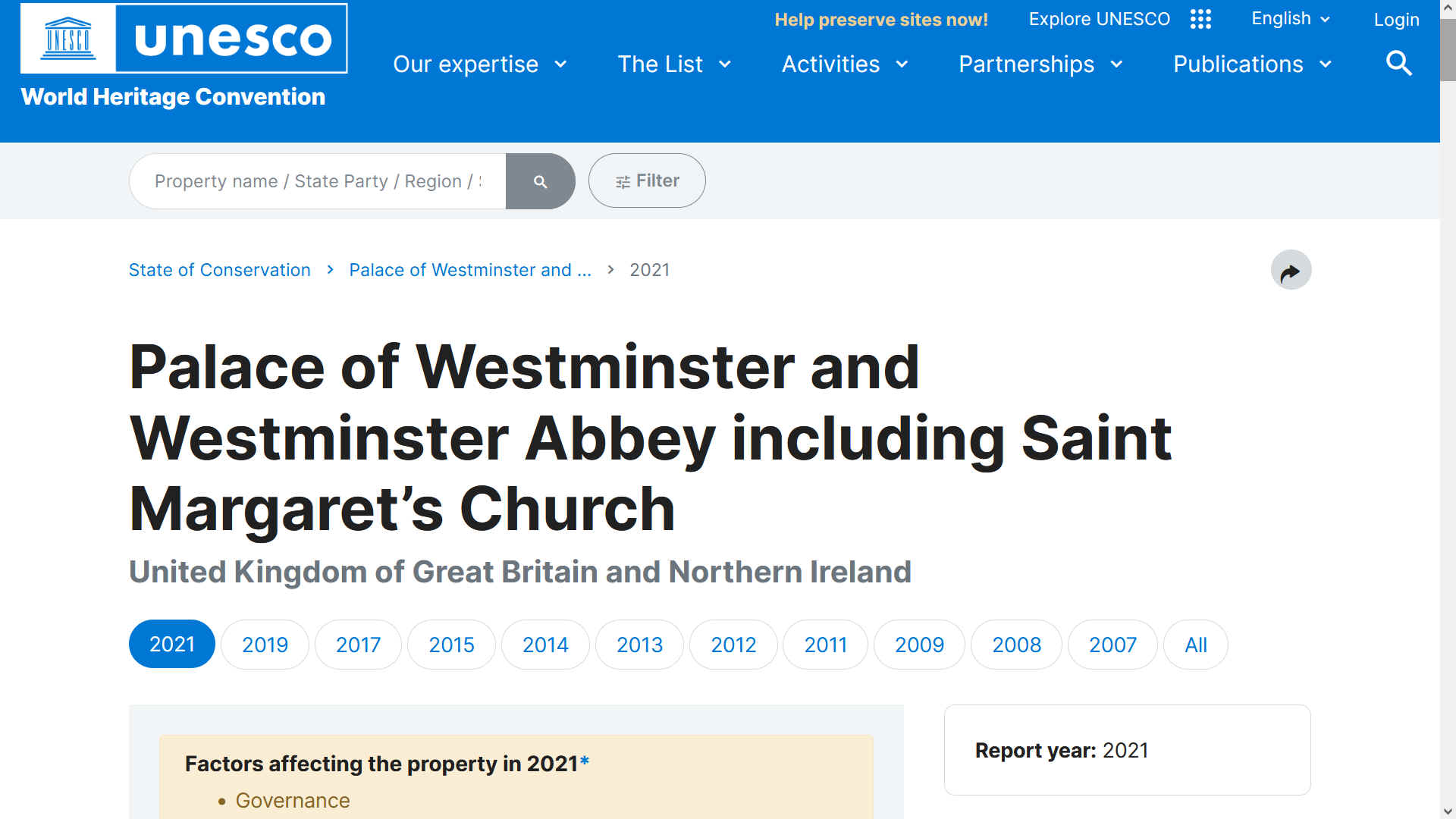
Westminster Palace, rebuilt from the year 1840 on the site of important medieval remains, is a fine example of neo-Gothic architecture. The site – which also comprises the small medieval Church of Saint Margaret, built in Perpendicular Gothic style, and Westminster Abbey, where all the sovereigns since the 11th century have been crowned – is of great historic and symbolic significance.
Featured in the Coronation
of King
Charles III on the 6th of May 2023.
The
UN Watchdogs have serious
concerns that as things stand in the United Kingdom, governments over
the past 20 years have slowly eroded the ability of Britain, to care for
this important heritage asset, the proof of which lays in the rutted
and potholed roads across the country. Stemming from a negative
economy, with the National Debt standing at £2.7 trillion pounds, held
to be irrecoverable by some, with the United States and Joe Biden (17
May 23), being in a similar situation, where they may miss borrowing
repayments, if their debt limit is not raised. The US Treasury has warned of grim consequences if the country runs out of cash to pay its bills, which would leave it unable to pay federal workers and trigger a likely surge in interest rates with knock-on effects for businesses, mortgages
- and global markets.
The United States could begin defaulting on its debts "potentially as early as June 1," Treasury Secretary Janet Yellen said
on Monday, while the nonpartisan Congressional Budget Office has forecast June 15.
Republicans have continued to insist Biden agree to significant spending cuts in exchange for their support to raise the debt ceiling.
As to the UK, it is not the ‘superpower’ they seem to think they are
– according to media reports - they are a crumbling country, with interest rates rising, the NHS on its knees and people struggling with high mortgages, energy and food bills.
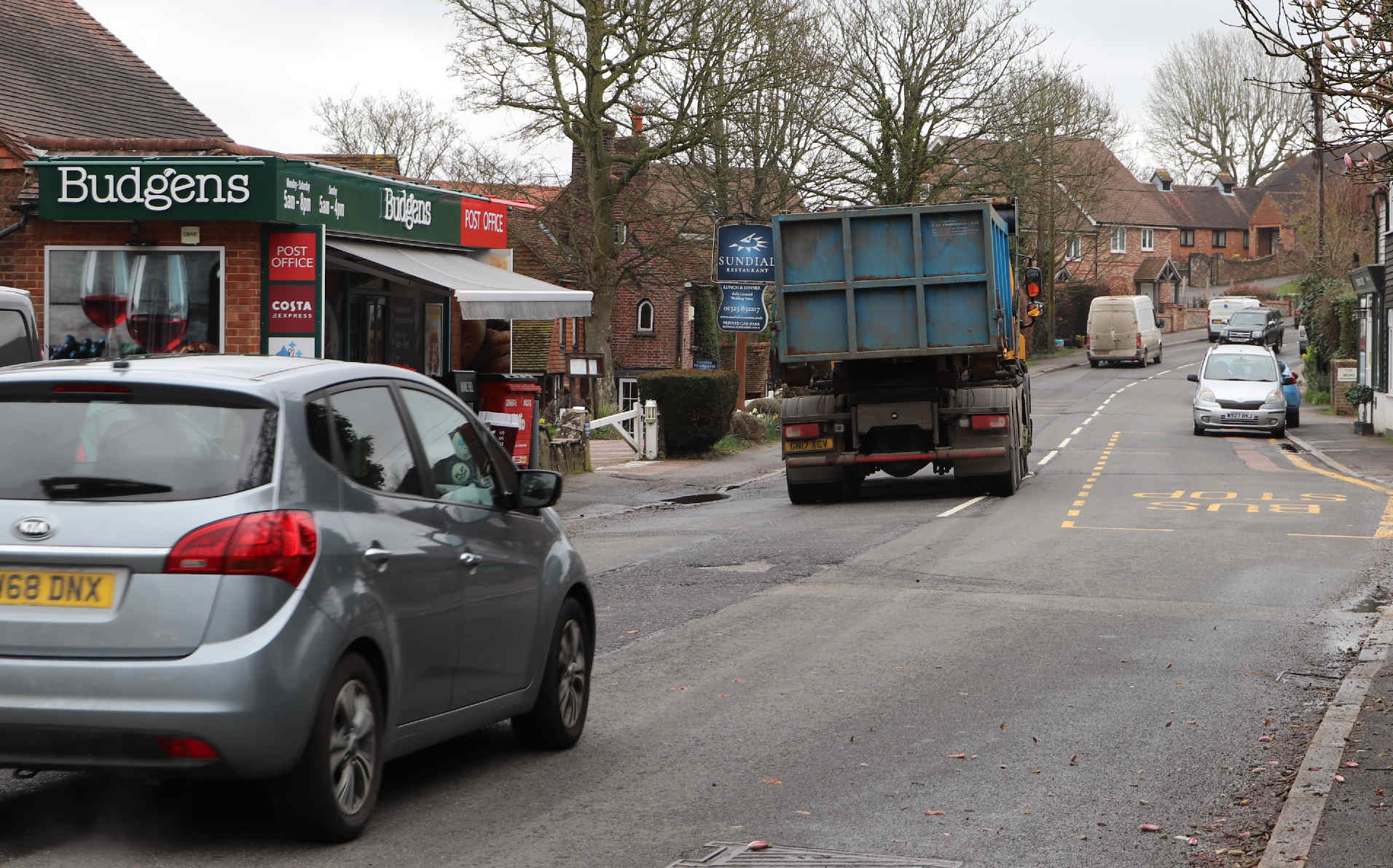
POTHOLED
ECONOMICS - If
the state of a nation can be measured by the condition of their roads.
Likened to the King wearing shoes with holes in their soles, or robes
that are threadbare. This is surely an indication that money is tight.
So tight, that although charging for services, the Government of the day
is unable to deliver. Creating a breach of contract situation for
drivers who expect their road fund licence monies, to repair and
maintain roads. In the UK, without any effective remedy, since the
tarmac is shot to bits - as these pictures prove. Retrospective taxes
move the goalposts, such that the electorate, the citizens that King
Charles the third is supposed to serve, and act as a responsible head of
state, is no longer able to provide. Queen Elizabeth the second was head
of state in the nineteen proceeding years, presumably then, she must
shoulder much of the blame, where the Prime Ministers she appointed, are
directly responsible for digging a financial hole that British citizens
cannot reasonably expect to fill, in their lifetimes, and the lifetimes
of their children. Herstmonceux village in Sussex, is a good example
(indicator) of a potholed economy - close to the Greenwich Meridian.
What is happening on your doorstep, is happening all over the United
Kingdom.
THE TELEGRAPH 16 MARCH 2023 - PARLIAMENT
COULD BE DESTROYED BY CATASTROPHIC EVENT BEFORE IN IS REPAIRED WARNS COMMITTEE
here is a “real and rising risk” that the Houses of Parliament will be destroyed by a catastrophic event before it is repaired,
MPs warned last night.
The Public Accounts Committee said the thousands who work in the Victorian edifice were being put at risk because it was leaking, at risk of fire, with masonry falling down.
They said it was “incredible” that no decisions had been made about how the Palace of Westminster should be restored, five years after MPs agreed to take action.
During these “years of procrastination”, Parliament has been spending £2million a week patching the Victorian building up, and the number of health and safety incidents - many of them involving asbestos - has grown.
Dame Meg Hillier, the chairwoman of the committee, said: “After years of procrastination and debate, resolutions of the House overturned and the exploding costs we saw in restoring just the Elizabeth Tower, it is difficult to have confidence in the future of the project to repair and restore this iconic world heritage site that thousands of people work in and visit every day.
“But without Parliament and the public having that confidence these critical works will continue to stall, with the real risk that the whole building will be destroyed by a catastrophic incident before the work is done, or perhaps even begun.
“There are already people on decades-long risk watchlists after being exposed to asbestos in the building; a building that’s leaking, dropping masonry and at constant risk of fire.”
The report said that, to date, the focus has been on Members of Parliament rather than the thousands of staff and visitors who use the building.
THE COST WILL BE HIGH
The timeframe and cost remain uncertain except that the cost will be high and that further delays are hugely costly to the taxpayer.
Parliament is spending up to £2million a week patching up the Palace but there is still a growing list of health and safety incidents, including some involving asbestos.
The committee concluded that the Clerks of both Houses “finally seem to acknowledge publicly the enormity of this task, for which they are now personally accountable”, but it remains unclear how they will manage their legal responsibilities to the programme alongside those to individuals working in and visiting the Palace.
The Clerks and newly created programme structures “need to build confidence in their ability to deliver a programme of this magnitude and complexity”.
Timely transparency and compliance with health and safety protocols, particularly around asbestos, urgently needs to improve before more significant works and potentially more serious incidents occur.
Dame Meg said: “Given the uncertainties over how the Clerks will manage their legal responsibilities, who will really be held responsible and accountable if the unthinkable happens?
“In response to this report the PAC expects a lot more clarity on those critical issues and, finally, a clear indication of the cost and timeline for getting this massive job done before it becomes too late to do so.”
OUTSTANDING UNIVERSAL VALUE
BRIEF SYNTHESIS
The Palace of Westminster, Westminster Abbey and St Margaret’s Church lie next to the
River Thames in the heart of
London,
England. With their intricate silhouettes, they have symbolised monarchy, religion and power since Edward the Confessor built his palace and church on Thorney Island in the 11th century AD. Changing through the centuries together, they represent the journey from a feudal society to a modern democracy and show the intertwined history of church, monarchy and state.
The Palace of Westminster, Westminster Abbey and St Margaret’s Church continue in their original functions and play a pivotal role in society and government, with the Abbey being the place where
monarchs are crowned, married and
buried. It is also a focus for national memorials of those who have served their country, whether prominent individuals or representatives, such as the tomb of the Unknown Warrior. The Abbey, a place of worship for over 1000 years, maintains the daily cycle of worship as well as being the church where major national celebrations and cultural events are held. The Palace of Westminster continues to be the seat of
Parliament.
Westminster School can trace its origins back to 1178 and was re-founded by
Queen Elizabeth I in 1560. It is located around Little Dean’s Yard.
The iconic silhouette of the ensemble is an intrinsic part of its identity, which is recognised internationally with the sound of “Big Ben” being broadcast regularly around the world.
The Palace of Westminster, Westminster Abbey, and St Margaret's Church together encapsulate the history of one of the most ancient parliamentary monarchies of present times and the growth of parliamentary and constitutional institutions.
In tangible form, Westminster Abbey is a striking example of the successive phases of English Gothic art and architecture and the inspiration for the work of Charles Barry and Augustus Welby Pugin on the Palace of Westminster.
The Palace of Westminster illustrates in colossal form the grandeur of constitutional monarchy and the principle of the bicameral parliamentary system, as envisaged in the 19th century, constructed through English architectural references to show the national character.
The Palace is one of the most significant monuments of neo-Gothic architecture, as an outstanding, coherent and complete example of neo-Gothic style. Westminster Hall is a key monument of the Perpendicular style and its admirable
oak roof is one of the greatest achievements of medieval construction in wood. Westminster is a place in which great historical events have taken place that shaped the English and British nations.
The church of St Margaret, a charming perpendicular style construction, continues to be the parish church of the Palace of Westminster and has been the place of worship of the Speaker and the House of Commons since 1614 and is an integral part of the complex.
Criterion (i): Westminster Abbey is a unique artistic construction representing a striking sequence of the successive phases of English Gothic art.
Criterion (ii): Other than its influence on English architecture during the Middle Ages, the Abbey has played another leading role by influencing the work of Charles Barry and Augustus Welby Pugin in Westminster Palace, in the "Gothic Revival" of the 19th century.
Criterion (iv): The Abbey, the Palace, and St Margaret's illustrate in a concrete way the specificities of parliamentary monarchy over a period of time as long as nine centuries. Whether one looks at the royal tombs, the Chapter House, the remarkable vastness of Westminster Hall, of the
House of
Lords, or of the House of Commons, art is everywhere present and harmonious, making a veritable museum of the history of the
United
Kingdom.
INTEGRITY
The property contains the key attributes necessary to convey its Outstanding Universal Value. In 2008 a minor boundary modification was approved to join the existing component parts of the property into a single ensemble, by including the portion of the road which separated them. There are associated attributes outside the boundary, which could be considered for inclusion in the future, and this will be examined during the next Management Plan review.
The instantly recognisable location and setting of the property in the centre of London, next to the River Thames, are an essential part of the property’s importance. This place has been a centre of government and religion since the days of King Edward the Confessor in the 11th century and its historical importance is emphasised by the buildings’ size and dominance. Their intricate architectural form can be appreciated against the sky and make a unique contribution to the London skyline.
The distinctive skyline is still prominent and recognisable despite the presence of a few tall buildings as part of the property. The most prominent of these, Milbank Tower and to some extent Centre Point - now protected in their own right - were both extant at the time of inscription. However important views of the property are vulnerable to development projects for tall buildings. Discussions have begun and are ongoing on how to ensure that the skyline of the property and its overall prominence is sustained, and key views into, within and out of the property are conserved. The main challenge is agreeing on a mechanism to define and give protection to its wider setting. Until agreement can be reached on this, the integrity of the site is under threat.
The buildings are all in their original use and are well maintained to a high standard. There has been little change to the buildings since the time of inscription although external repairs continue and security measures have been installed at the Palace of Westminster.
The heavy volume of traffic in the roads around the property does impact adversely on its internal coherence and on its integrity as a single entity.
AUTHENTICITY
The power and dominance of state religion, monarchy and the parliamentary system is represented tangibly by the location of the buildings in the heart of London next to the River Thames, by the size of the buildings, their intricate architectural design and embellishment and the high quality materials used. The Palace of Westminster, the clock tower and “Big Ben’s” distinctive sound have become internationally recognised symbols of Britain and democracy. All the buildings maintain high authenticity in their materials and substance as well as in their form and design.
The property maintains its principal historic uses and functions effectively. The Gothic Westminster Abbey, a working church, continues to be used as a place of daily worship. It remains the Coronation church of the nation and there are frequent services to mark significant national events as well as royal weddings and funerals and for great national services. Many great British writers, artists, politicians and scientists are buried or memorialised here. The Palace of Westminster continues to be used as the seat of the United Kingdom’s two-chamber system of democracy. St Margaret’s Church, now part of Westminster Abbey, remains at heart a medieval parish church, ministering to Members of both Houses of Parliament.
PROTECTION & MANAGEMENT REQUIREMENTS
The UK Government protects World Heritage properties in England in two ways. Firstly individual buildings, monuments and landscapes are designated under the Planning (Listed Buildings and Conservation Areas) Act 1990, and the 1979 Ancient Monuments and Archaeological Areas Act and secondly through the UK Spatial Planning system under the provisions of the Town and Country Planning Acts. The individual sites within the property are protected as Listed Buildings and Scheduled Ancient Monuments.
Government guidance on protecting the Historic Environment and World Heritage is set out in the National Planning Policy Framework and Circular 07/09. Policies to protect, promote, conserve and enhance World Heritage properties, their settings and buffer zones are also found in statutory planning documents. Policies to ensure this can be found in statutory planning documents, which are reviewed and publicly consulted upon on a regular cycle.
The Mayor’s London Plan provides a strategic social, economic, transport and environmental framework for London and its future development over the next 20-25 years and is reviewed regularly. It contains policies to protect and enhance the historic environment, including World Heritage properties. Further guidance is set out in London’s
World Heritage Sites – Guidance on Setting, and The London View Management Framework Supplementary Planning Guidance provides guidance on the protection of important designated views. It includes 10 views of the Westminster World Heritage property including a view looking from Parliament Square towards the Palace of Westminster.
The City of Westminster also has policies in its Core Strategy to protect the historic environment generally and the property specifically. Its cross cutting policies provide for management of the historic environment and protection of important views, buildings and spaces with particular reference to the Westminster World Heritage property. Although the property is located within the City of Westminster, much of its setting covers adjoining boroughs. The neighbouring Boroughs of Lambeth and Wandsworth also include policies in their Local Plans for the protection of the setting of the Westminster World Heritage property.
Both Westminster Abbey and the Palace of Westminster have Conservation Plans that put in place a comprehensive conservation maintenance regime based on regular inspection programmes. The Westminster World Heritage Site Management Plan was published by the property’s Steering Group in 2007. There is no coordinator, and implementation of key objectives is undertaken by the key stakeholders – the Palace of Westminster, Westminster Abbey and Westminster City Council - working within the Steering Group framework.
There are continuing pressures for development and regeneration in the area around the property and permission has been given for tall buildings which could adversely impact on its important views. The guidance set out in the Mayor’s Supplementary Planning Guidance on London’s World Heritage Sites – Guidance on Setting, together with the London View Management Framework, English Heritage’s Conservation Principles and Seeing the History in the View identify methodologies to which could be used to assess impacts on views and on the setting of the World Heritage property and its Outstanding Universal Value. However, there is no single, specific mechanism in place to protect the setting of the property.
As one of the most famous sites in London and a key tourist attraction, the property receives high numbers of visitors who require proactive management to minimise congestion and careful visitor management to protect the fabric and setting of the property. The protection and enhancement of the public realm and better traffic management, particularly in the quiet spaces adjacent to the property, are also important in protecting its setting. To address these issues, an overall visitor management strategy and a traffic management strategy are needed to complement the visitor management strategies of the individual stakeholders, together with greater protection of the setting of the property and its key views. Ways in which this can be achieved will be examined in the Management Plan reviews
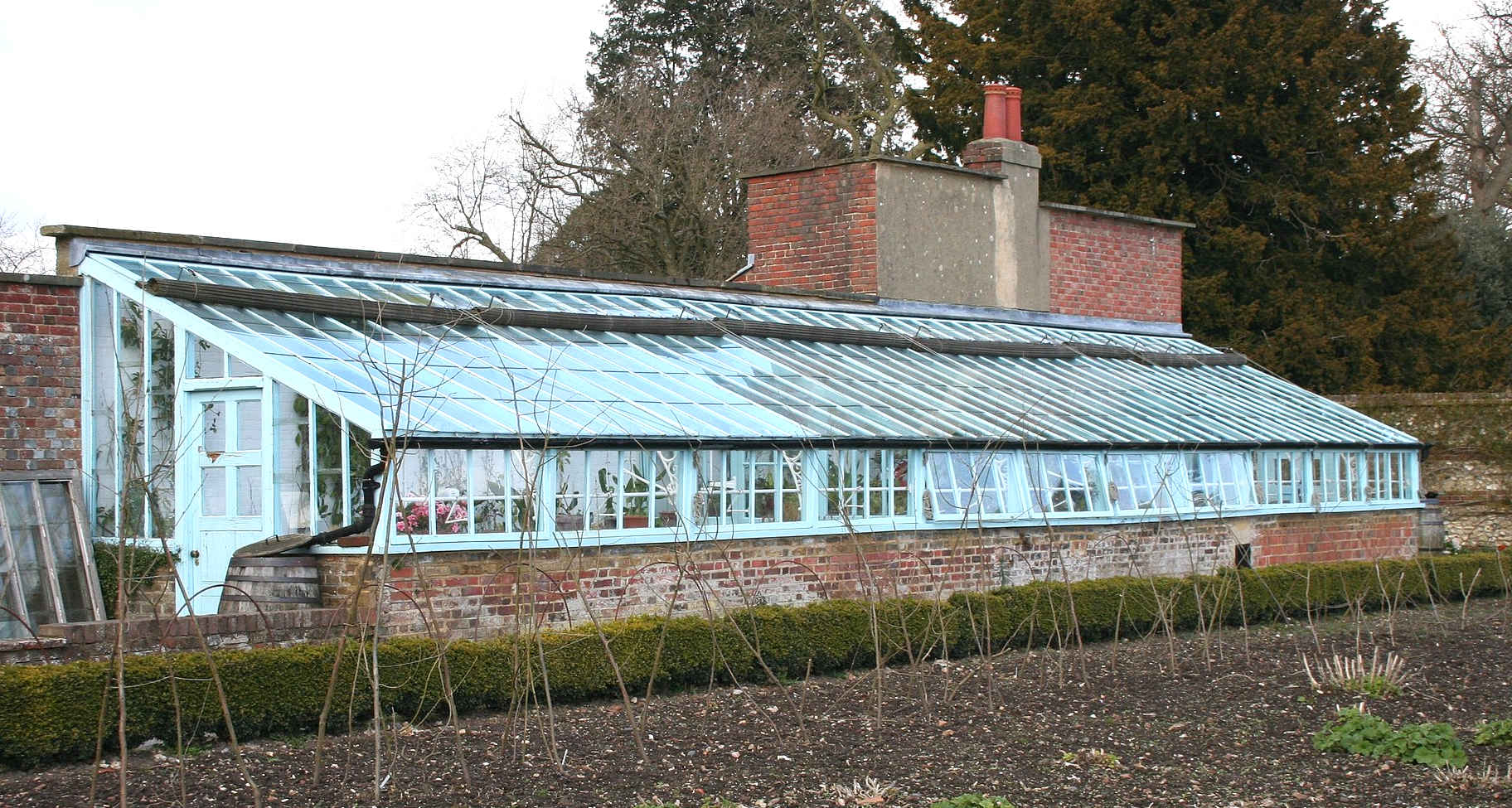
DARWIN'S
GREENHOUSE - In a letter to Joseph Dalton Hooker of 19 April [1855] (Correspondence vol.5) Darwin said that he did not have a greenhouse. However, this soon changed. An entry in his Classed Account Book (Down House Ms) for 1 February 1856 indicates that he paid £67 to John Strudwick, a builder from Westerham, to build a
greenhouse. The earliest structure in the building sequence for the greenhouse appears to be that at the east end of the present building, although it was reroofed in 1898. Its construction differs from the later work, in that the bricks are laid on edge as rat trap bond. This first greenhouse appears to have been unheated.
EXECUTIVE SUMMARY AND LIST OF RECOMMENDATIONS 2017
The World Heritage property “Palace of Westminster and Westminster Abbey including Saint
Margaret’s Church” was inscribed in 1987 as a cultural site under criteria (i), (ii) and (iv) at the 11th session of the World Heritage Committee held at UNESCO headquarters. In 2008, a
minor boundary modification was approved at the 32nd session of the World Heritage
Committee (Quebec, 2008), which combined the two existing parts of the property into a clearly
unified ensemble.
The property has been the subject of eight State of Conservation reports since 2007. In 2015
at its 39th session (Bonn, 2015), the Committee noted that there still appeared to be an
inadequate urban planning framework to manage development in the setting of the property,
with the result that development that had been approved, contrary to the advice of English
Heritage (now Historic England), was beginning to have a cumulative negative impact. It also
requested information on conservation works being planned for the Palace of Westminster,
and the progress on the development of a new management plan. The Committee further
requested the State Party to invite a joint ICOMOS/ICCROM Reactive Monitoring mission to
evaluate the extent of impacts on the Outstanding Universal Value of the property resulting
from the implementation of the ongoing projects and other current planning applications, and
to identify potential courses of action to address ways of strengthening the protection of the
property, including through improved planning frameworks and management structures. The
mission was carried out from 21 – 23 February 2017. ICOMOS was represented by Tamás
Fejérdy, and ICCROM by Joseph King.
GENERAL FINDING
The World Heritage property of Palace of Westminster and Westminster Abbey including Saint
Margaret’s Church is one of the most important and recognizable monuments in London, and
is a World Heritage Property with Outstanding Universal Value (OUV). After examining the
situation on the ground, and carrying out discussions with stakeholders from all levels of
government, the Mission finds that the World Heritage property is vulnerable to incremental
changes, in particular to its setting, and is currently facing threats from the effects of
development projects. These threats come mainly from the potential to diminish the important
visual qualities of the property, including views both to and from the site. In the case of
Elizabeth House, the Shell Centre, and the Nine Elms project, the World Heritage Committee
has already expressed concern as to the negative impacts on the OUV of the property. As
these projects are in construction, the Mission can confirm the concerns of the Committee.
There is also, however, concern about the decision-making process for future development
requests. The fact that these projects received statutory consent and were allowed to be built
shows that despite the numerous policies that are in place at the national, city-wide, and
borough levels, there is a disconnect between the good intentions of the policies and the
buildings that are being constructed which negatively impact on the OUV of the property.
At a more general level, there is a need for the State Party to ensure that mechanisms are in
place to reinforce the protection of OUV in the planning and decision-making process. The
Mission, therefore, recommends that planning policies be reconsidered to provide a clearer,
more concrete guidance for developers and decision-makers, and that the notion of balance
between protection of OUV and the other benefits of the development projects be much more
weighted towards the requirement to protect OUV, in keeping with the letter and spirit of the
World Heritage Convention. New tools such as the 3D modelling and analysis tools discussed
during the mission are considered positive and should allow for judgements not just of
individual projects, but also cumulative effects of many planned or proposed projects.
The Mission also considers that the State Party should reconsider the role of Historic England
and the advice that it provides when making decisions on development projects. Historic
England has a long knowledge and working relationship with the implementation of the World
Heritage Convention, and as the national heritage advisor, is best placed to be able to provide
balanced and useful advice in regard to decisions that have a potential to affect OUV. The
Mission also suggests that the State Party should consider calling in all planning applications
that may have impact on the OUV of the property, especially in the event that Historic England
has advised on such a possible impact.
In regard to site management, the Mission Team recommends that the new Management Plan
be completed as soon as possible, and that the Steering Committee with an active participation
of the Greater London Area be strengthened to ensure more effective implementation. Care
should also be taken to ensure that any planned developments within the site or its immediate
surroundings, including road closures, new buildings or infrastructure, new visitor facilities, and the proposed Holocaust Memorial, should be carefully evaluated to ensure that they do not
negatively affect the OUV of the property.
The State of Conservation of the buildings themselves appears to be in the hands of very
qualified conservation professionals. Nevertheless, given the large scale of the proposed
Restoration and Renewal project for the Palace of Westminster, the State Party should keep
the World Heritage Committee informed as the plans develop, in accordance with the
Operational Guidelines to the World Heritage Convention. This was unfortunately not done
before construction began on the access tower for the new Triforium museum at Westminster
Abbey. The mission, therefore, recommends that the State Party make additional efforts to
keep the World Heritage Committee informed of any planned significant changes to the
property.
The State Party should consider establishing links between the site management teams of
each of the four London World Heritage properties. Such a link would enhance the possibility
for communication and finding innovative solutions to common problems. This is also true for
the World Heritage properties in the United Kingdom as a whole. A stronger network of World
Heritage properties would provide benefits for all.
The Mission team notes that if the concerns expressed in chapter 3 of this document are not
addressed effectively, and if the process for consent for development projects is not modified
to take a stronger consideration of the Outstanding Universal Value of the property, it will likely lead to a continued deterioration of the setting of the property, and may lead to the need to consider placing the property on the World Heritage List in Danger.
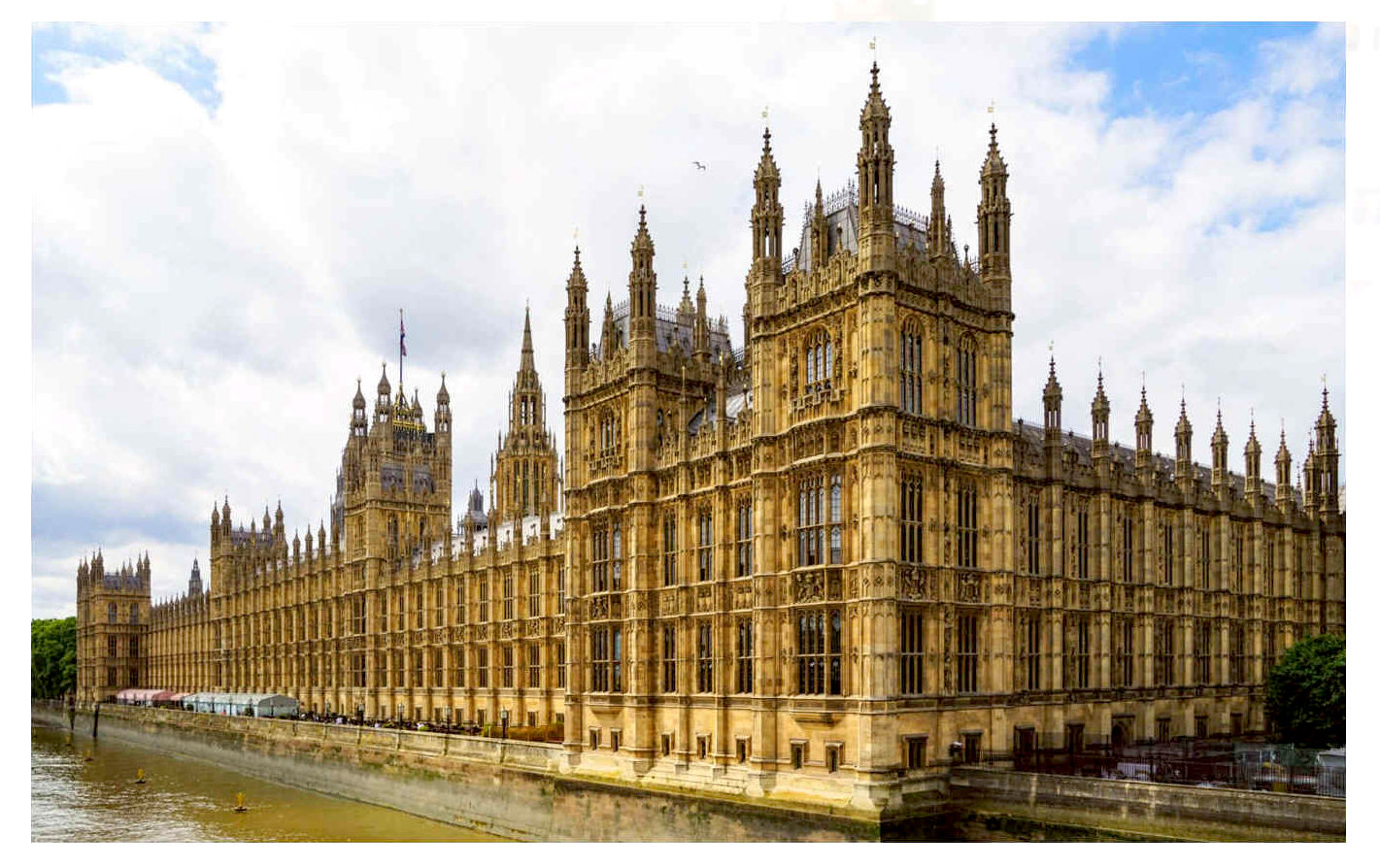
RECOMMENDATION
The Reactive Monitoring Mission carried out by representatives of ICOMOS and ICCROM,
from 20 – 23 February 2017, came to the following more specific recommendations after
review of the documents provided as well as on-site visits and meetings with stakeholders.
RECOMMENDATIONS ON ISSUES AT A GENERAL LEVEL
Recommendation 1: Awareness materials should be developed to provide all stakeholders in
the process with more information about the World Heritage Convention, and in particular, the
concept of Outstanding Universal Value. These materials should be widely distributed, and an
emphasis should be given to the management and protection aspects of OUV.
Recommendation 2: Policy and guidance materials should be written in as concrete a manner
as possible to reduce the possibility for interpretation in a way that is not consistent with the
protection of OUV. Steps have been taken in recent years to do so, but the disconnect between
the words within the polices and the results on the ground still remains large enough for
concern.
Recommendation 3: The State Party should consider revising its planning and policy
documents to ensure that the protection of OUV is given the maximum weight possible when
balancing the harm to the heritage vs. the potential benefit. These policies should continue to
emphasize sustainable development approaches to development at World Heritage properties
and their settings. But, as a first principle, these developments should have as a centrepiece,
a requirement for protection of OUV. This is a fundamental concept of the World Heritage
Convention.
Recommendation 4: Properties recognized as World Heritage (whose preservation and
safeguarding is subject of an international treaty signed at State Party level) should enjoy a
special status in regard to decision-making at all levels. There is a need for a widening
cooperation in the decision-making process, using synergetic capacities among the boroughs,
supported by coordination at the level of the Greater London Authority. It should play a much
larger role in determining consent when there is a potential for negative impact on the OUV of
a property in accordance with the London plan and other policy and guidance documents at
the city level.
Recommendation 5: The national government should consider calling in every planning
application that has a potential to impact negatively on the OUV of a World Heritage property.
In this regard, the advice of Historic England should be given a strong weight in determining
when to call in an application. In this way, the obligations of the United Kingdom under the
World Heritage Convention can be met more effectively than is currently the case.
Recommendation 6: Historic England should be given a stronger role at all levels to give advice
on development projects. The organization already does play a significant role, but its advice
is sometimes not given the necessary weight when difficult development decisions are taken.
Recommendation 7: Creative means should be explored with the World Heritage Centre and
Advisory Bodies to minimize the impact of non-complimentary timeframes for commenting on
and consenting to development proposals.
RECOMMENDATION ON SITE MANAGEMENT
Recommendation 8: The new management plan for the World Heritage property, which is in
preparation, should be finalized as soon as possible by the Westminster City Council, in
cooperation with the other members of the Steering Group. This management plan should
consider management and decision-making issues within the World Heritage property and its
setting. It should also include disaster risk management at the property and in each of the
buildings of the property. The plan should contain clear actions for its implementation taking
into account all members of the Steering Group and should assign responsibilities as well as
indicators for implementation to allow for an evaluation of its implementation over time.
Recommendation 9: The Steering Group should be revitalized, with regular meetings and a
more action oriented perspective in regard to overseeing the implementation of the
Management Plan. The Greater London Authority should also take a more active role in the
Steering Group (perhaps becoming a co-chair) to bridge differences amongst the boroughs.
RECOMMENDATIONS ON URBAN PLANNING AND DEVELOPMENT PROJECTS WITH AN EMPHASIS ON TALL BUILDINGS
Recommendation 10: It would be advisable and necessary to create an inventory of
already - issued building permission for tall buildings with indication of the level of their realization (not yet started, started, under construction, almost finished). At least in the context of the World Heritage property it would also be advisable to create a tool for possible amendment during
realization (e.g. building stop at lowest level, having less floors as planned etc.).
Recommendation 11: The Mission Team does not recommend listing the property on the World
Heritage List In Danger at this time, despite the negative impacts that developments such as
Elizabeth House, Shell Centre, and Nine Elms, all three in construction, have on the OUV of
the property. Nevertheless, the cumulative effect of these developments with other planned
developments could lead the Committee in the future to consider In Danger listing.
Recommendation 12: The State Party needs to use a more robust method of carrying out
Heritage Impact Assessments on any developments, which may have an impact on the OUV
of the property. These HIA need to have the strong input and advice of Historic England and
should become the basis for any decision-making for approval of development projects.
Recommendation 13: The 3D modelling system, that is currently in development, should
continue to be refined and developed in a way that allows developers, planners, and
decision-makers to have a more dynamic system of view protections for the World Heritage property.
In regard to views, the system of important views should be reviewed to take into account the
possibilities of views at different levels and in “non-traditional” places.
Recommendation 14: The planning process should be revised to take into account the impact,
not only of single development proposals, but also the cumulative effects of a number of
projects either approved or in the planning stage. Tools such as 3D modelling should be used
to more easily see these potential cumulative effects.
Recommendation 15: The advice of the national heritage advisor, Historic England, should be
given a much greater weight by all of the boroughs and other levels of decision-making when
evaluating projects and their potential impact on OUV. It is unlikely that if Historic England has an objection to a particular project, that the World Heritage Committee and its Advisory Bodies would have a lesser concern. An objection by Historic England should already be a warning
sign to the whole chain of decision-making that there will likely be issues at the World Heritage
level.
RECOMMENDATIONS ON THE URBAN PLANNING ISSUES WESTMINSTER
Recommendation 16: The phased approach to the closure of Abingdon Street, the demolition
of the temporary education centre, and the development of an updated visitor management
and interpretation strategy is welcomed. In conformity with paragraph 172 of the Operational
Guidelines, the State Party should inform the World Heritage Centre as proposals are
developed for any changes to the spaces adjacent to the Palace of Westminster, Westminster
Abbey, Saint Margaret’s Church, and Parliament Square that may affect the Outstanding
Universal Value of the Property.
Recommendation 17: The Holocaust Foundation may wish to consider setting up a mechanism
whereby the Jury of the design competition for the memorial is able to get advice from the
World Heritage Centre and/or Advisory Bodies before a final decision is taken. In any event,
the selected design and related developments should be submitted to the World Heritage
Centre, in conformity with Paragraph 172 of the Operational Guidelines.
Recommendation 18: The State Party may wish to reconsider the establishment of a buffer
zone around the World Heritage property. While not able to deal with issues related to the
larger setting, a buffer zone could be a useful tool to inform future development and design of
any new elements in the vicinity of the World Heritage property. Recommendations on the Restoration of Buildings within the World Heritage Property
Recommendation 19: As more detailed plans are developed for the Restoration and Renewal
project for Westminster Palace, the State Party should keep the World Heritage Centre and
Advisory Bodies informed as soon as possible, particularly in regard to demolitions or new
constructions, but also to any other significant works that may impact on the OUV of the
property. This early notice will avoid any misunderstandings as the work progresses.
Recommendation 20: The Restoration and Renewal project offers the Westminster team an
opportunity to reconsider the temporary structures for entertaining along the riverside façade
of the palace. Any eventual hospitality structures on that important view should take into
account the visual impacts from the Lambeth side of the river and should in no way have a
negative impact on OUV.
Recommendation 21: The mission team regrets that the work on the Triforium project was
carried out without an HIA and without informing the World Heritage Centre prior to
commencement of the project. While it does not appear that this addition will have a negative
impact on the OUV of the property, it is recommended that any future work be subject to HIA
and information being provided. In the meantime, the mission recommends that full information
on the existing project be sent to the World Heritage Centre as well as a final report of the
works once they have been completed to ensure that there has been no negative impact on
the OUV.
Recommendations on Linking the Palace of Westminster and Westminster Abbey including
Saint Margaret’s Church World Heritage Property to its Larger Context in London and the
United Kingdom
Recommendation 22: The Greater London Authority should consider the creation of a “joint
committee” or other coordinating structure, which would allow the four World Heritage
properties in London to establish mechanisms for networking and cooperation in management
and conservation. This process should be open to all boroughs who are involved in the
management and conservation of these properties.
Recommendation 23: In a similar fashion, the national government should consider setting up
a “joint committee” of all World Heritage properties in the United Kingdom to allow for a better
understanding of common problems and a means of developing innovative solutions.




